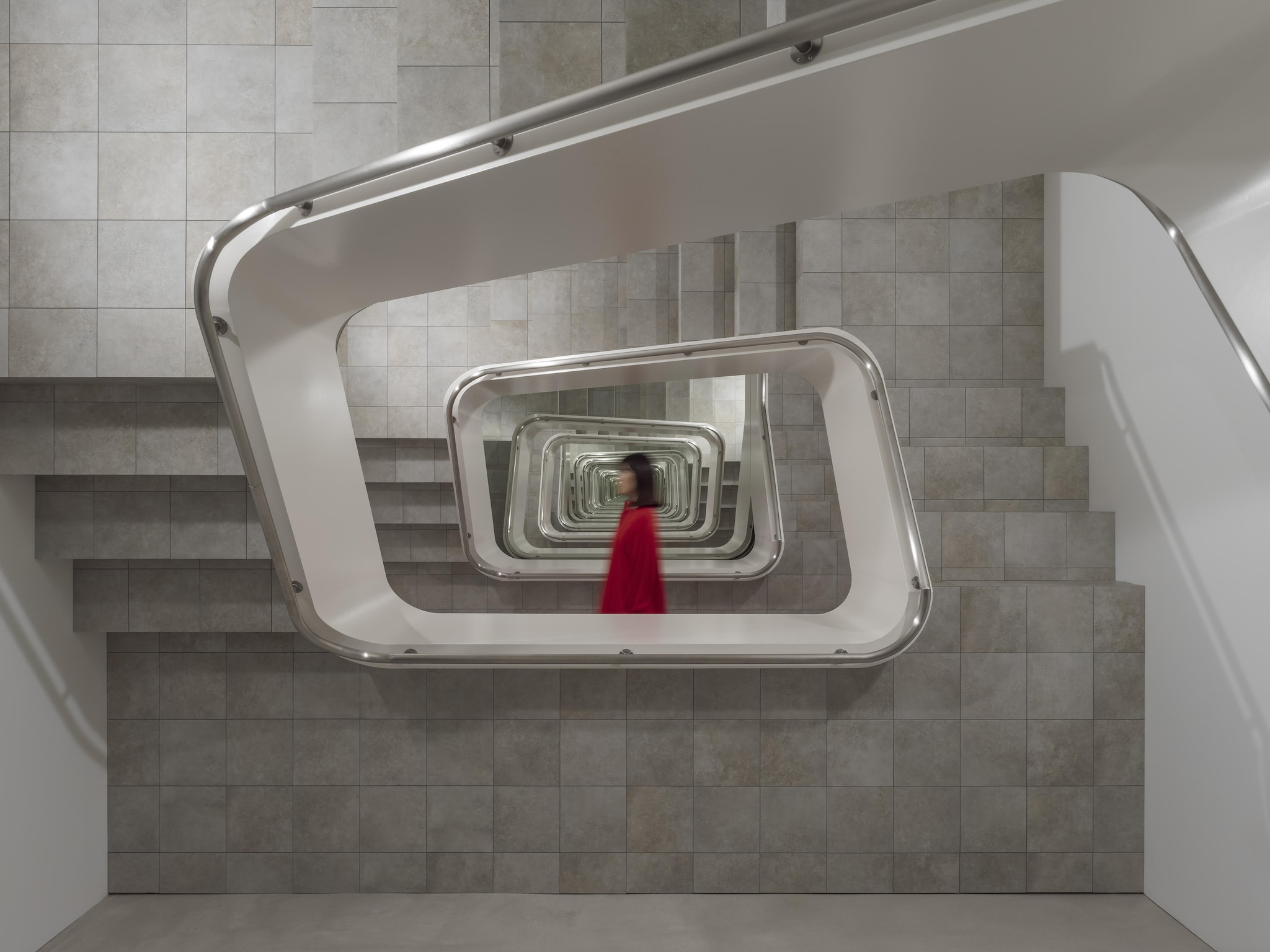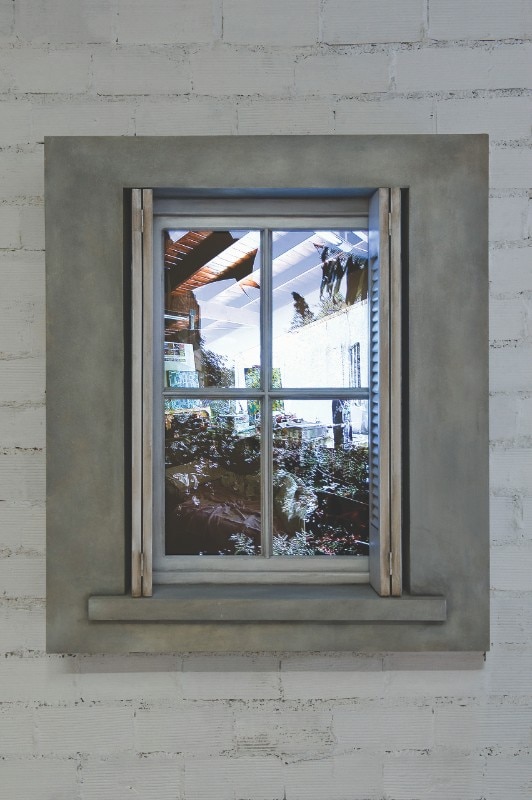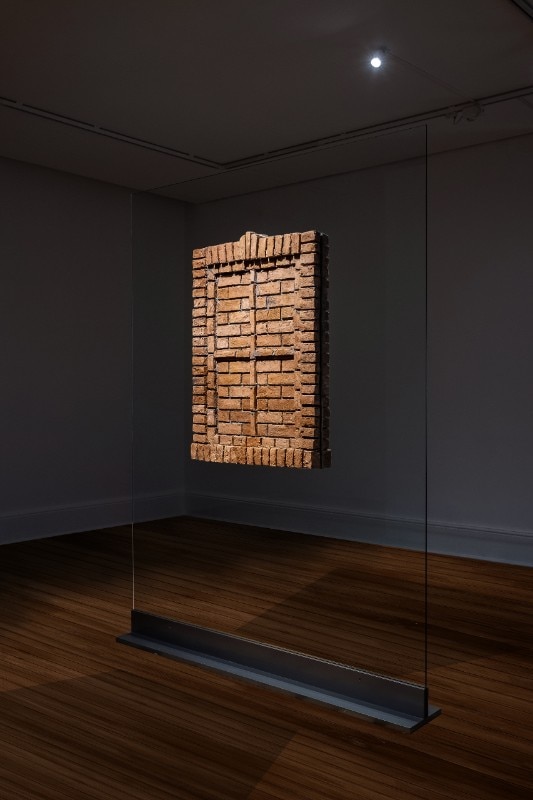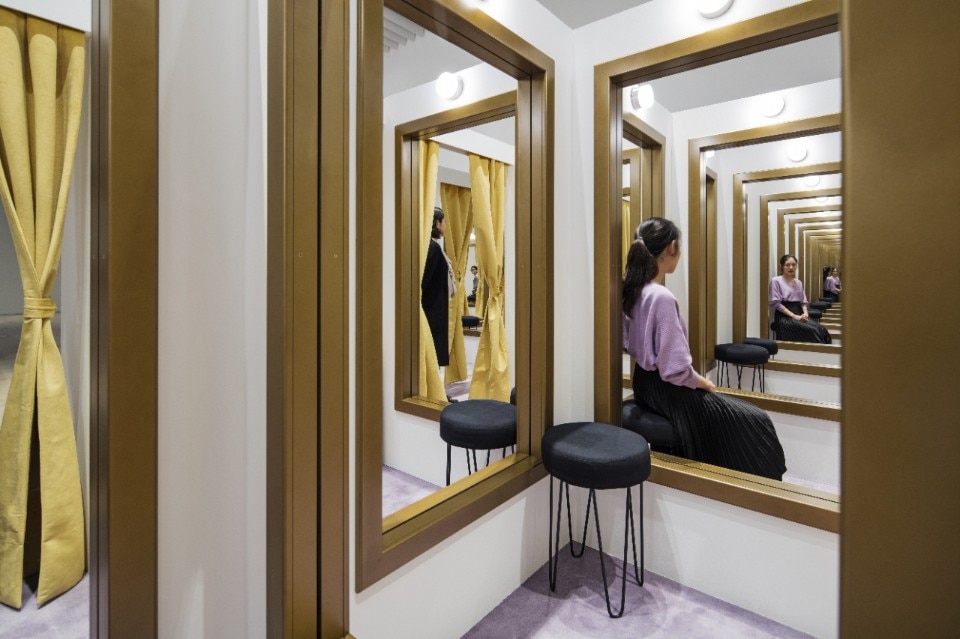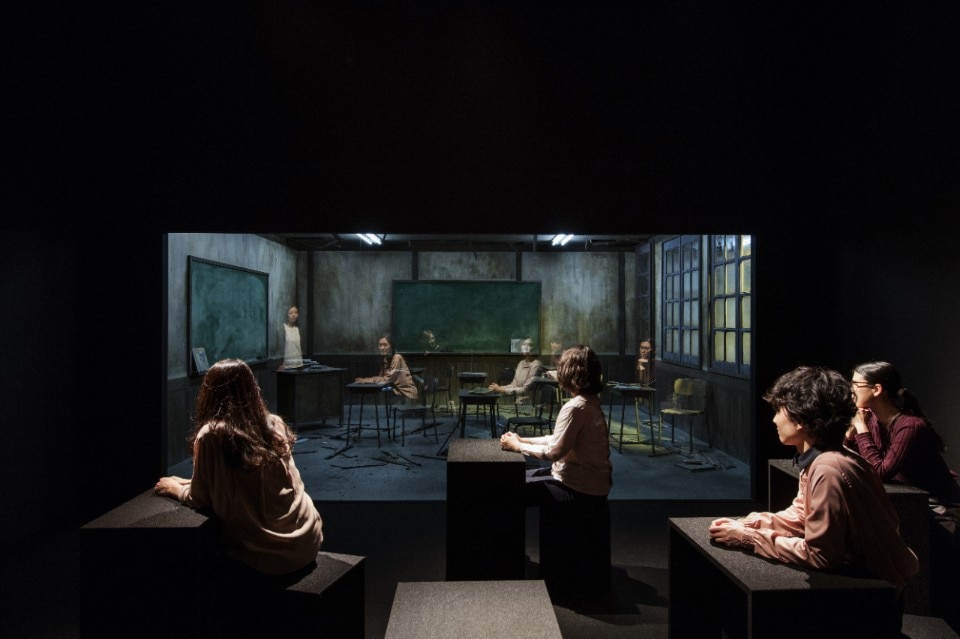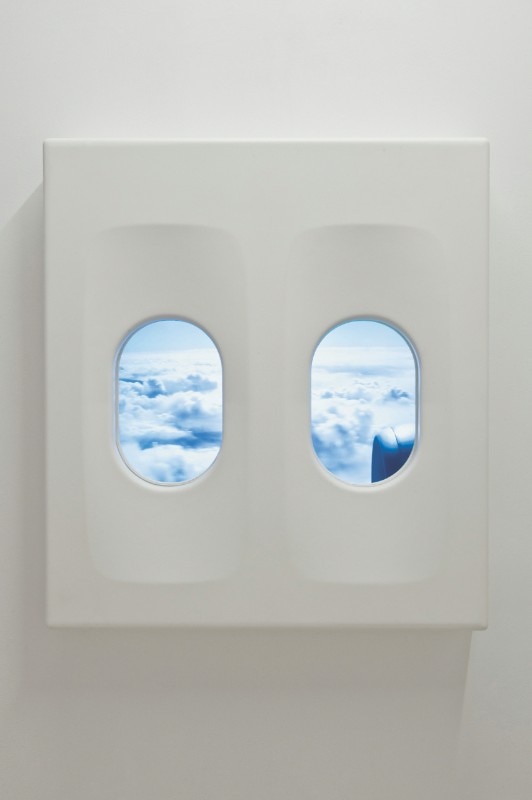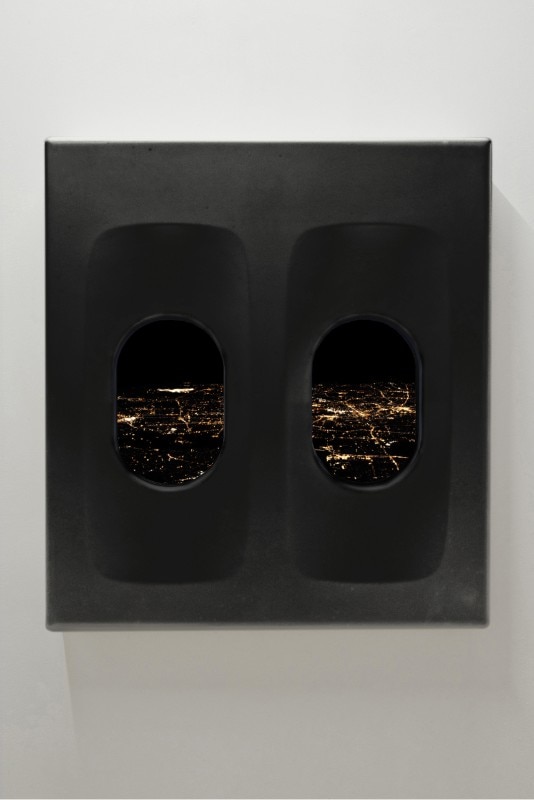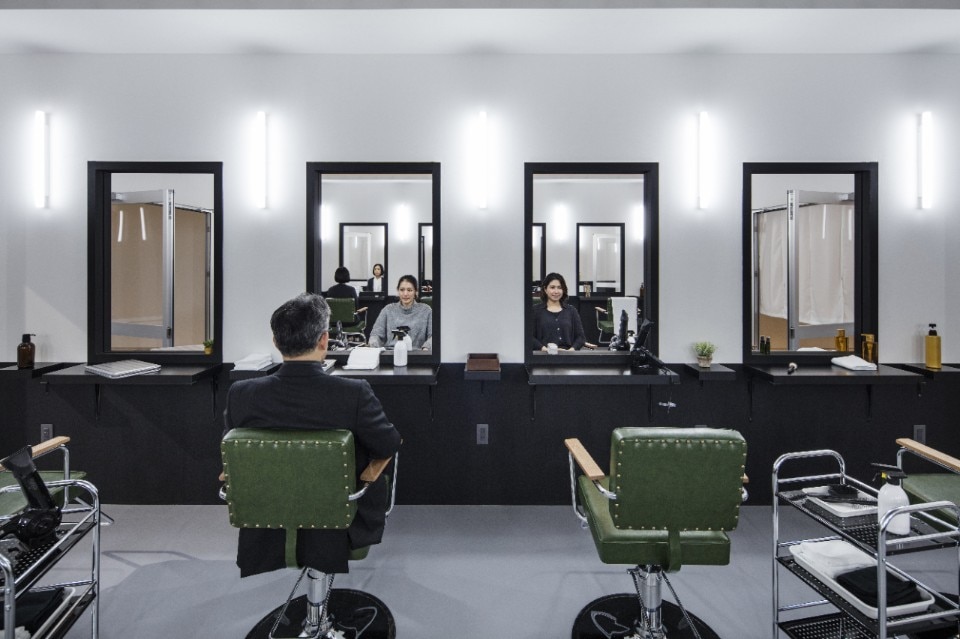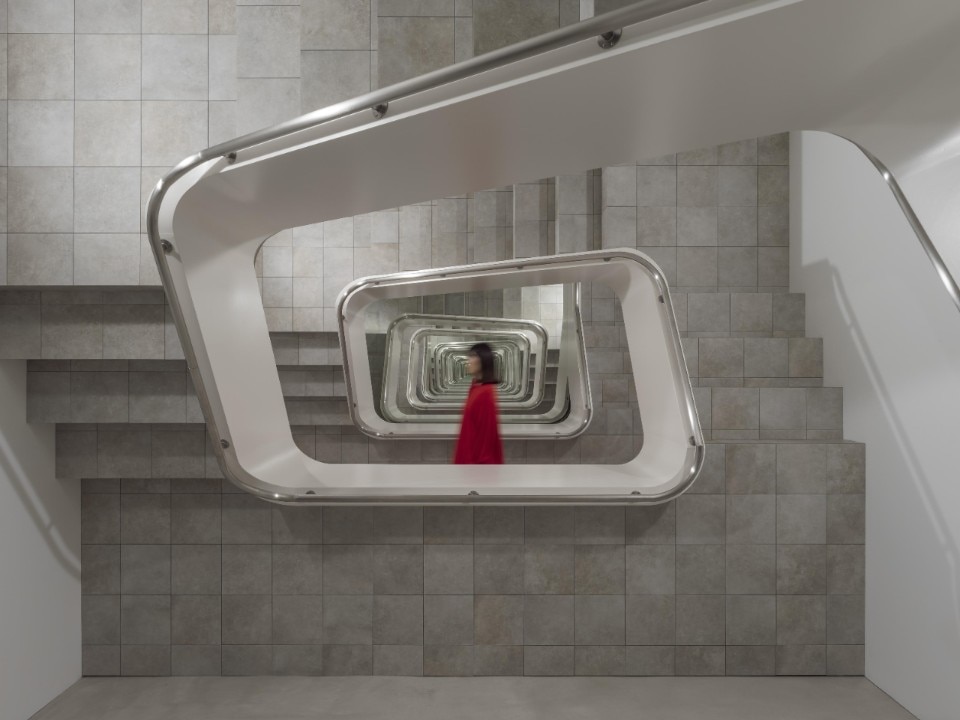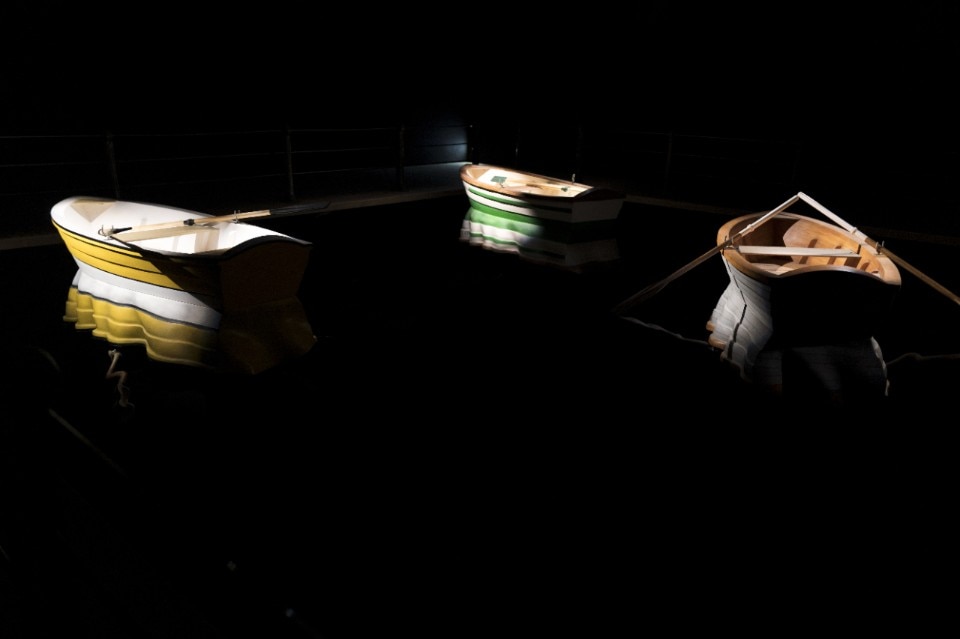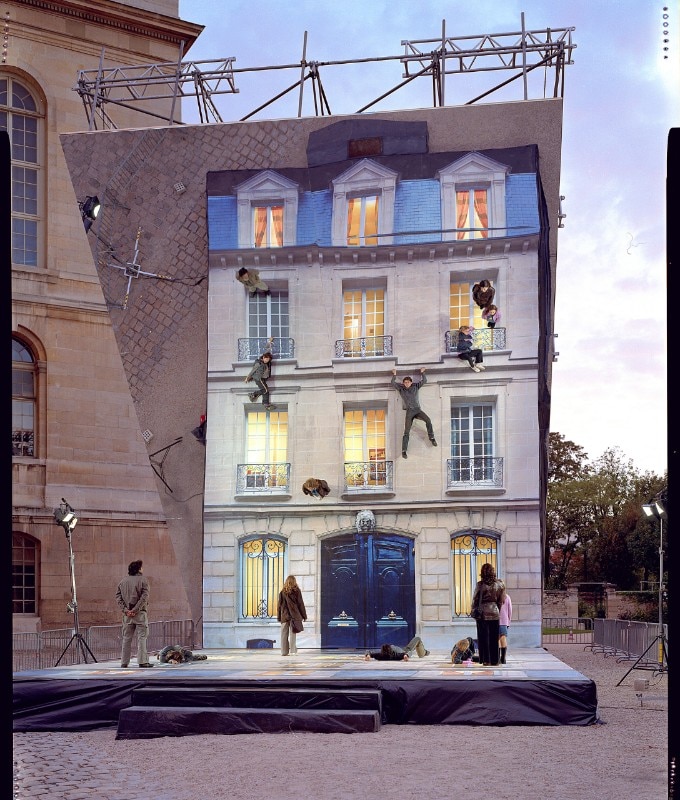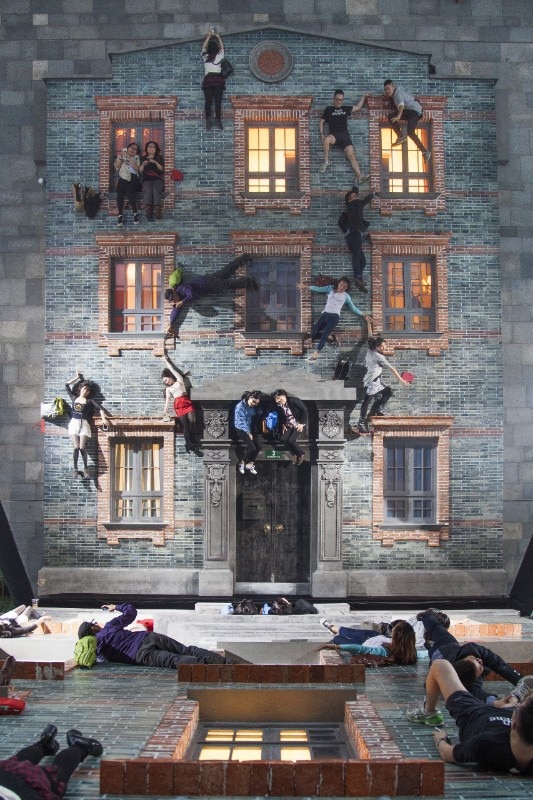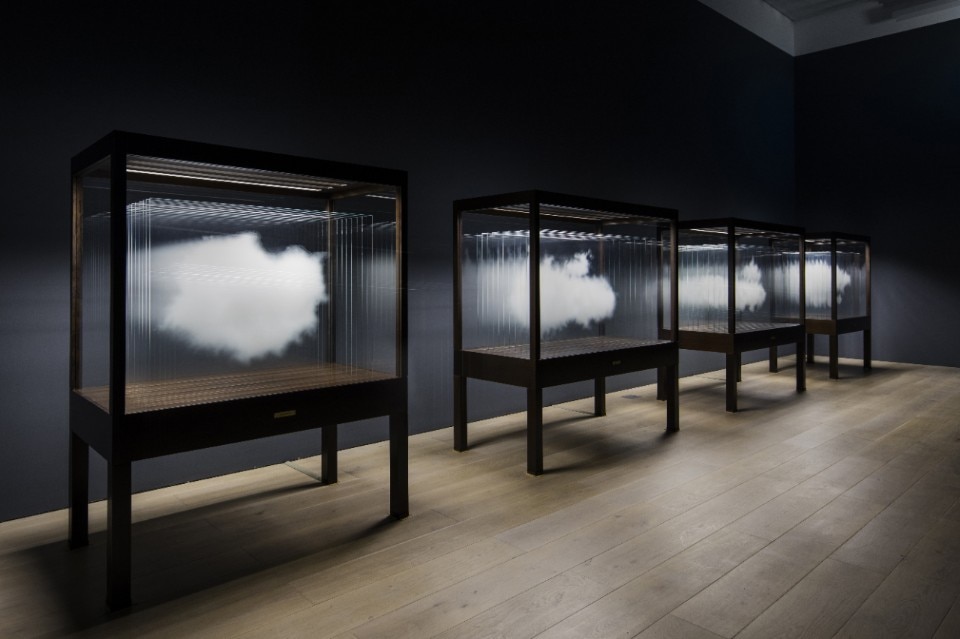Nearly two decades ago, Leandro Erlich conceived Bâtiment for Paris White Night, an awe-inspiring work of art in which the facade of a Parisian building was laid horizontally on the ground. Since then, the Argentine artist has reimagined it in urban and museum spaces around the world, from Europe to Asia to America. Each adaptation seamlessly integrated local architectural elements, with windows, cornices, balconies, and friezes tailored to harmonize with each host city. This thought-provoking interplay between typology and stereotype captivates viewers. In Milan, the installation is known as Palazzo, taking center stage in the expansive monographic exhibition presented by the esteemed Palazzo Reale, centrally located in the city. Situated in the outer courtyard of the Palazzo (the place), Palazzo (the work) constitutes its public face to the city, an enticing prelude to the exhibition labyrinth inside. Restricted by a red cordon, it’s evident that this installation consistently draws large crowds.
The Palazzo serves as a theatrical machine that allows the show to unfold.
What makes Bâtiment/Palazzo special, in all its remarkable variations, is the presence of a giant mirror tilted at forty-five degrees. This ingenious design creates the illusion that what is happening horizontally on the floor is actually happening on the wall of a real building. Erlich’s artistic skill shines through in these immersive installations, which only come to life when inhabited by visitors. This is his magnum opus. The Palazzo serves as a grand stage, a backdrop, and a theatrical machine that allows the show to unfold. But the real protagonist, the real work of art, is the dynamic interplay between the paying public and the artwork itself – an ongoing performance in which individuals or groups assume whimsical and captivating poses to create the strangest, most moving, most head-turning figure. Visitors hop between shutters and terraces, squeeze under railings, or lean back in a way that, when viewed in the mirror, appears as if they are performing a headstand balanced on a balustrade. “Do they have magnetic shoes?” asks a passing man in his 60s, obviously unfamiliar with the work and caught up in the illusion.
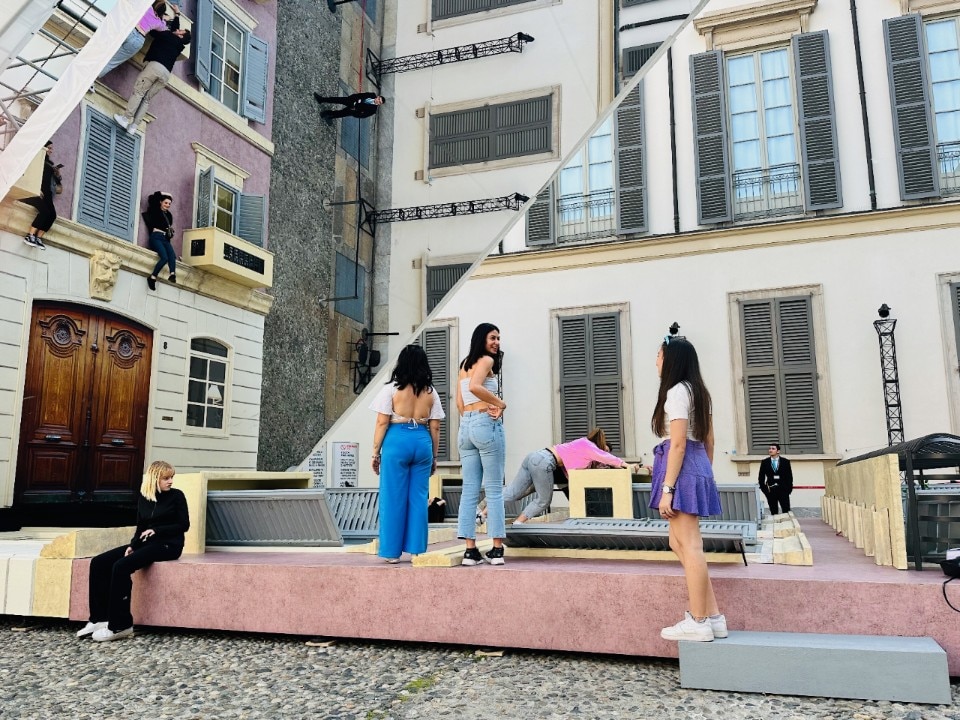
Everyone participates in this collective outdoor performance. Among them are the carefree kids, the goth girl, the handsome guy who proudly told his date in the ticket line that he “doesn’t read explanations in museums”, the suit-and-tie broker who was “taking a break from his desk” because the markets were quiet today anyway, the three young girls who traveled from Pavia, the retired couple on a trip to Milan, and the hyper-hippie one with their eclectic ensemble of multicolored hair, Birkenstocks, Indian-style dresses, and Rosalía T-shirt.
All of them are holding their phones at all times, vertically – of course – shooting Instagram stories. For this exhibition finds its vitality through its reflection on the platform. In the age of Instagram’s reproducibility, this is the ultimate work of art.
It’s easy to say that social media as we know it is over, that the rise of the TikTok model and its content creators is poised to overshadow Instagram and other platforms. But the concepts of being “Instagrammable” or “Instagenic” have become an integral part of our lives over the past decade, and will undoubtedly continue for the foreseeable future. Domus’ annual compilation of the most Instagrammable installations has long been a favorite during the Fuorisalone. The profile grid has become a business card that requires constant updating, and exhibition organizers have found Instagrammers to be useful allies in boosting ticket sales. Exhibitions now inhabit an augmented reality, delicately balancing between the physical space and its digital reflection. Visitors’ photos and videos on social media serve as a vast echo chamber that, by the way, pays off. Not surprisingly, hashtags and profile mentions are strategically placed at the entrance to and throughout Erlich’s exhibition.
The range of emotions evoked by the over 60 thousand images tagged with #leandroerlich can vary widely: curiosity, a longing to be part of the experience, FOMO, disinterest, boredom, or even disgust towards what may be perceived as a debased popular demonstration, reinforcing our presumptions of belonging to a higher cultural or social class. The truth is that these images are a reflection of all of us. They are the remnants we leave behind for future generations to remember these years. The mirror holds special significance for the Argentine artist, and his popularity owes much to the reflection of his works in the Instagram mirror.
Palazzo serves as the alpha and omega (and threshold, of course), of “Over the Threshold” – the first-ever European monographic exhibition dedicated to Leandro Erlich. Presented with grandeur by the Palazzo Reale, Erlich is celebrated as “the contemporary artist who has captivated record-breaking numbers of visitors”. Millions around the world, including 300,000 in Buenos Aires and twice as many in Tokyo, have been mesmerized by his artistry. The exhibition showcases 18 additional works that wind through the halls and corridors of the Palazzo Reale’s ground floor. Visitors can indulge in selfies before Night Flight (2015) or contemplate the mirrored windows of Lost Garden (2013). A group of girls critique Changing Rooms (2008) – a complex arrangement of 30 changing rooms where mirrors and corridors intertwine – saying “The picture doesn’t do it justice”. The captivating interplay of mirrors reappears in the reproduction of a hair salon within Hair Salon. Amidst the spectacle, a woman with white hair and several tattoos on her arms grows impatient after several attempts to capture the perfect shot between the stairs in Infinite Staircase – a celebrated masterpiece by Erlich and one of the most Instagrammed works of art.
In the age of Instagram’s reproducibility, this is the ultimate work of art.
“Reality and perception are inseparable for me” is the first line of a long quote by Erlich, written on a wall in the exhibition. As you move through the space, you may occasionally feel disoriented. At times, it becomes difficult to tell whether you are looking at a reflection or real people and objects. Then, darker works like Classroom (2017) and Traffic Jam (2018) plunge the unsuspecting Instagrammer into a whirlpool of disillusionment, shattering the expectation that everything in Leandro Erlich’s palace of artist’s mirrors is an enchanting fairy tale. Without these interludes, “Over the Threshold” would probably be little more than a mere artistic imitation of attractions like the Museum of Illusions or other superficial endeavors designed solely to capture catchy selfies – places where visitors pay a modest sum of around fifteen euros to enter.
Instead, “Over the Threshold” transcends the abundance of images and the superficial pursuit of those who only chase selfies, and reflects the restless spirit of our time. Leandro Erlich is a highly accomplished artist who represented Argentina at the 2001 Venice Biennale with his stunning Swimming Pool, which was later shown at PS1 in 2008, two years before the birth of Instagram. Even back then, his works thrived on the interaction of visitors, in that case walking underwater or swimming in non-existent waters. Like an illusion – the central theme of his work – Leandro Erlich was already ready for a world yet to come.
But then that world eventually arrived, making him the quintessential embodiment of the “Instagrammable” artist, with such a power to overshadow other more profound yet possible interpretations of his work. It is up to visitors to decide whether to use it as a backdrop for a selfie or to look inside, looking for ourselves.
.jpg.foto.rmedium.jpg)
Opening image: Leandro Elrich’s Palazzo, photo by Fabrizio Specces for Artemisia
Leandro Erlich. Oltre la soglia
curated by Francesco Stocchi
Until 4 October 2023
Palazzo Reale of Milan


 copy.jpg.foto.rmedium.jpg)
